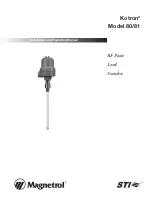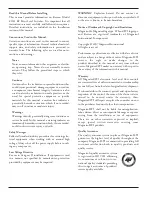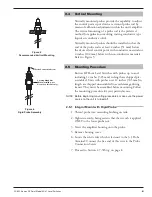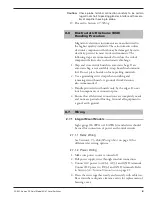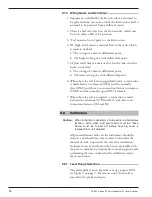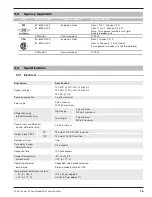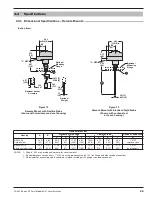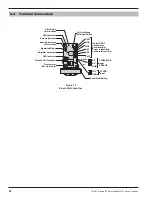
11
50-605 Kotron RF Point Model 80/81 Level Switches
2.7.4 Wiring Notes and Definitions
1. Equipment controlled by the Kotron relays is assumed to
be powered from one source, while the Kotron unit itself is
assumed to be powered from a different source.
2. There is a fail-safe switch on the Kotron unit, which may
be set in either a HL or LL position.
3. “Fail” means a loss of power to the Kotron unit.
4. HL (high level) means a material level in the tank, which
is equal to or above:
a. The setting of a narrow differential point.
b. The higher setting of a wide differential point.
5. LL (low level) means a material level in the tank, which is
equal to or below:
a. The setting of a narrow differential point.
b. The lower setting of a wide differential point.
6. When the relay coil is de-energized (fail-safe), a connection
is made between common (COM) and the normally
closed (NC) and there is no connection between common
(COM) and the normally open (NO) terminals.
7. When the relay coil is energized, a connection is made
between the terminals COM and NO, and there is no
connection between CM and NC.
2.8
Calibration
Caution:
When instrument calibration is to be done in a hazardous
location, extra steps and precautions must be taken.
Power must be turned off before housing cover is
removed from unit amplifier.
All pre-installation checks on the instrument should be
done in a non-hazardous area in order to minimize the
amount of work required on the unit after installation.
Instrument can be checked on the bench, preferably with
the process material, by temporarily connecting power and
performing the steps outlined in the calibration adjust-
ment instructions.
2.8.1 Level Range Selection
The preamplifier circuit board has a range jumper (JU1),
see Figure 9 on page 9. For remote units, this board is
located in the probe enclosure.

